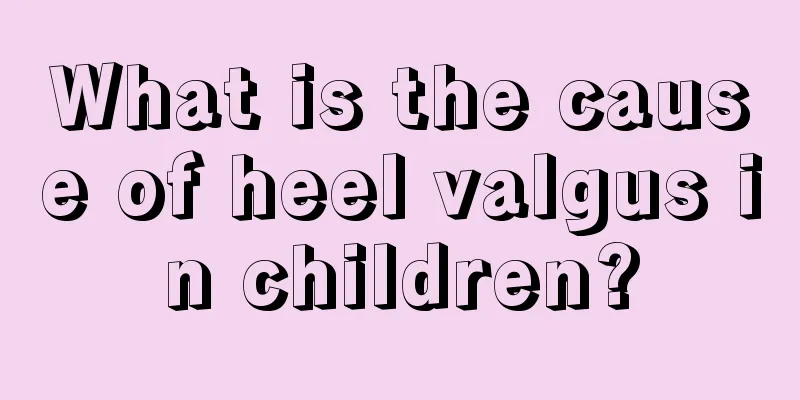What is the cause of heel valgus in children?

|
The healthy development of children is our greatest wish, but there are always some things in life that are not satisfactory. For example, the bone development problems of children make parents feel very painful. Among them, children have the most problems with the bone development of their feet, and among them, the problem of the heel has the greatest impact. Let's take a look at what is the heel valgus in children? I hope everyone can understand it. The health of babies' feet is often neglected by parents. Foot problems are serious and if not detected and treated quickly, they can have permanent effects on your baby. Among the baby's bone development problems, hallux valgus is quite common. According to statistics, 1 to 2 out of every thousand children are born with hallux valgus.Characteristics of baby's hallux valgus The most obvious feature of hallux valgus is that the sole of the newborn's foot is abnormally close to the calf. This is because the foot is squeezed for a long time when the fetus is in the mother's womb, causing dorsiflexion and hallux valgus of the calcaneus. It will heal naturally after the squeezing sensation disappears after birth. Generally, it will improve naturally within 2-3 months after birth. If there is no obvious improvement, seek medical attention and receive early treatment. If the baby is not treated promptly, the heels will tilt inward more than 4° when standing. The symptom of supine valgus foot is that the child's foot can be seen valgus after birth. The foot can be extended dorsi to be close to the calf, but it can be passively corrected to the neutral position of the foot. In this case, there is no abnormality in the X-ray examination. Extensive valgus foot can be corrected by manipulation: Under the guidance of a doctor, the ankle should be plantar flexed (dropped), inverted, and adducted 200 times each day. It can also be fixed with plaster. After 1 to 3 months of correction using the above methods, most children will be able to return to normal.How to diagnose baby's foot valgus: 1. The baby has plantar flexion and varus deformity on one or both sides of the foot after birth. 2. Adduction and inversion of the forefoot, plantar flexion of the talus, inversion and plantar flexion of the calcaneus, contracture of the Achilles tendon and plantar fascia. The forefoot becomes wider, the heel becomes narrower and smaller, and the arch is high. The lateral malleolus is prominent anteriorly, while the medial malleolus is posteriorly and not obvious. 3. When standing and walking, the outer edge of the plantar bears weight. In severe cases, the outer edge of the dorsum of the foot bears weight, causing bursitis and callus in the weight-bearing area.4. Unilateral deformity will cause limping while bilateral deformity will cause unsteady walking. 5. X-ray: The angle between the longitudinal axis of the talus and the first metatarsal is greater than 15°, and the angle between the plantar surface of the calcaneus and the longitudinal axis of the talus is less than 30°. |
<<: What should I do if my seven-month-old baby has rib valgus?
>>: What should I do if my baby has ectropion?
Recommend
Why are three-month-old babies easily frightened?
In life, some parents always complain that their ...
What should I do if children have blister-type athlete’s foot?
Nowadays, many children wear bought shoes, especi...
Early symptoms of nephritis in children, mothers must read
If parents want to know whether their children ar...
What should young children pay attention to when swimming?
In this hot summer, babies are very uncomfortable...
How long does it take for a child to recover from a broken arm?
Because children often run and jump without takin...
How to deal with tooth decay in a three-year-old baby
Many people have had cavities when they were youn...
Postural manifestations of sequelae of cerebral palsy in children
Cerebral palsy in children can cause serious harm...
This is why children's heart beats too fast
As we all know, a fast heartbeat is very harmful ...
What are the developmental indicators for a two and a half year old baby?
In life, a newborn baby is the focus of the whole...
What should children eat to nourish their brain and improve their memory?
Many parents hope that their children will have a...
How to help bone development?
Bones are not only an organ in the human body, bu...
What to do if your child is restless
We often feel bad in our lives. When I was a chil...
Nursing knowledge of pediatric fractures
Children are naturally curious and like to move a...
What should I do if my two-year-old baby has a cough and runny nose?
Two-year-old babies are relatively young and have...
What are the symptoms of a concussion in children? Parents need to know this knowledge
Children love to play and are prone to falling. I...









